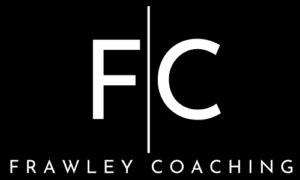This week I had the honor of teaching a class to a room full of professionals about pricing accurately. Pricing a home to sell is one part math, one part science, and one part magic. The magic isn’t so much wizardry as it is your ability to interpret market dynamics and apply that information to your strategy. Your fundamental role in this practice is having a comprehensive understanding of market driving principles as well as mastery of the conversations around pricing so that at the end of the day, both you and the Seller are winners.
PROFICIENT PRICING
Understanding pricing is crucial for success in real estate. To become proficient in pricing, you need to comprehend:
1. The workings of markets
2. The conditions of the local market
3. The criteria for pricing
MARKET DYNAMICS
Firstly, let’s discuss the functioning of markets. The foundation for pricing any real estate lies in two principles related to market value. The initial principle is market dynamics. Markets are governed by the law of supply and demand – when supply is more and demand is less, prices drop. Conversely, when supply is less and demand is more, prices rise. How do you interpret the current market situation? Next, let’s talk about the determination of value. Value is determined based on an agreement between a willing seller and a willing buyer. The constant struggle is between the seller’s asking price and the amount the buyer is willing to pay. In the current market, who do you think has the advantage: the seller or the buyer? Right. Seller’s typically have had the upper hand for the better part of the last decade.
MARKET CONDITIONS
Understanding the local market conditions is vital. To price correctly and sell effectively, you need to continuously monitor the conditions of your local market and the specific neighborhoods you’re interested in. Pay attention to these key factors: Inventory: What’s available for sale and are the numbers increasing or decreasing? Days on Market: How much time does a property take to sell? Price per square foot: This is a useful measure of prices when comparing properties with similar features and qualities. Changes in the local landscape: Keep track of changes in major employers, shopping facilities, schools, and other community services; changes in local laws affecting housing could also impact home prices.
PRICING CRITERIA
Understanding the specifics about pricing involves assessing a specific property in relation to other similar properties. This involves juxtaposing your clients’ 20-year-old three-bedroom, two-bathroom property and a neighborhood of similarly constructed homes with homes that have been sold recently and that are either identical or nearly identical to their home. Q: What aspects are considered when searching for properties that are comparable? The factors include location, size, amenities, and condition.
SIX STRATEGIES FOR PRICING
It is incredibly important to understand the following six critical strategies that set the stage for using pricing criteria effectively. The strategies are standards you need to bear in mind as you approach pricing any property.
With practice, you will absorb and internalize these things. They will become part of you as a real estate agent – and make you an outstanding advisor but to both buyers and sellers.
1. Know what sells
There’s no point in getting a listing if I can’t sell. I refuse to hang my sign in a yard that I’m not 100% convinced will get to the closing table. To get a home sold for the most money in the least amount of time, it must be priced “in the market”. There are two determining factors to pricing in the market: price and condition.
Competitively priced properties must present in the best possible condition outside and inside the home. Pricing above the market does not yet you showings, pricing out or just follow the market does.
2. Know what the seller and you can and cannot control
An important part of the pricing process is to help your sellers understand that agents and sellers do not determine the purchase price of their home. Instead the market determines the price.
Pricing to sell is based on understanding what is selling.
Try saying something like this:
“Some of the things you can control during the selling process or the condition of your property, the availability of your home for showings, and your positioning in the market. In the end, the value is determined solely by what a buyer is willing to pay in today’s market, based on comparing your home to others currently on the market for sale. I don’t determine value and neither do you. The market determines the value. Does this make sense?”
3. Understand the window of opportunity
The best chance to sell a home is when it first comes on the market! You only get one shot at being new. Sellers need to be clear on this, that there is a window of opportunity that opens, and closes, very quickly!
4. Price reflect market movement
Pricing requires facts and numbers, yet it’s also an art of persuasion. Choosing the right comparable properties is a big step in the right direction. But there’s so much more to it. Your job as the listing agent is to help your sellers understand how the right price impacts the market ability and salability of their home.
Marketability and salability are also determined by the following:
Market direction: weather the market is appreciating your depreciating
Market speed of change: how quickly prices are changing and what the rate of change is.
5. Don’t chase the market: price ahead of it
Being well-versed in the current market trends can be beneficial in any type of market, whether it’s appreciating, depreciating, or stable. In a bullish market, sellers who believe time is on their side may set their prices above the current market rate in the hopes that the market will rise to meet their price. This strategy, however, is only effective if the market continues to ascend. Even in a rising market, sellers looking to capitalize on increasing prices should still consider pricing at the market rate to secure a quick sale and move forward in their lives.
In situations where prices are on a downward trend, sellers often err by setting their prices too high in the hope of drawing in the offer they want, with the idea to reduce the price later if their initial approach fails. However, the truth is that majority of sellers who adopt this method never adjust sufficiently to align with the actual price trend. Sellers who set their prices correctly from the onset often attract buyers more quickly, whereas those who continually adjust their prices to meet the falling market often take a longer time to make a sale.
6. Don’t be afraid to be professionally honest
Setting the right price can be a challenging task, but it’s a worthwhile effort as it helps your sellers achieve their goals and generates revenue for your business. The best strategy is to uphold professional integrity. This involves comprehending the customer’s viewpoint, and having the professionalism to advocate for them and communicate honestly about various aspects such as market and property conditions, the location and features of the property, feedback from buyers and their agents, and comparable property sales. Always maintain honesty.
Be honest.
It’s a tough one to do, however it is imperative that we do this right. When hard conversations are ahead, I’ll ask my client truthfully: “Do you want me to tell you the truth, or do you want me to tell you what you wanna hear?” Inevitably they’ll give me permission to be frank with them, and that frees up space for transparency without fear of hurting their feelings.
Remember, we as professionals don’t determine the market, we only interpret it. When pricing a home to sell, in any market, you have the skills and resources to do it objectively and accurately.
Go forth and sell some houses, eh?
All my best,
Coach Lins





